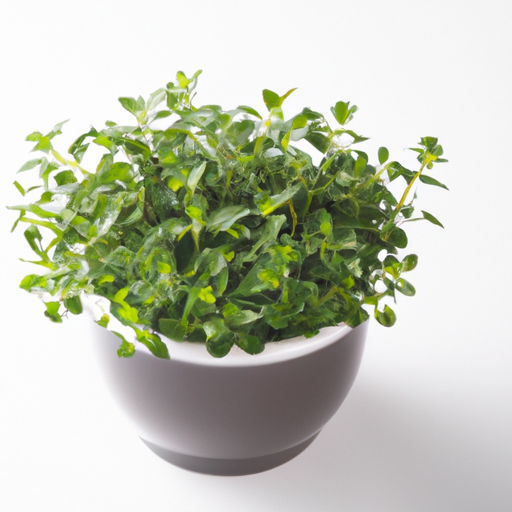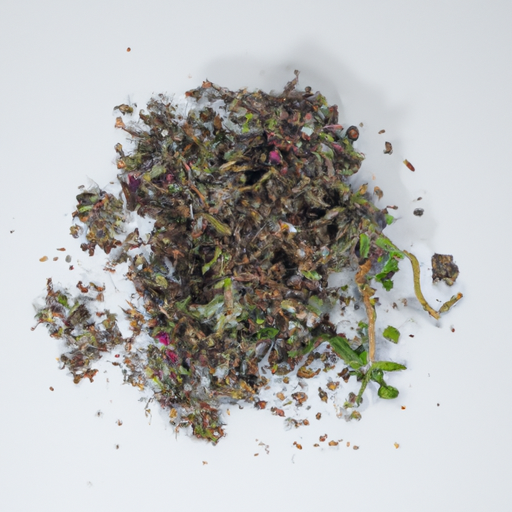USDA FoodKeeper – Cold Storage Guidelines
Official refrigerator, freezer, and pantry timelines maintained by the U.S. Department of Agriculture.
Visit USDA FoodKeeperPot marjoram brings a delightful, aromatic twist to your dishes, making it a must-have herb in your kitchen. While this fresh herb only lasts about five days in the fridge, you'll have a little wiggle room—it's still safe to use for two days after its prime. Just keep an eye on its freshness to ensure your meals are both delicious and safe!
Pot Marjoram may remain safe to consume after its expiration date if it has been stored correctly at the proper temperature and shows no signs of spoilage. However, risk increases over time, especially if storage conditions were not optimal.
Storage timeline guidance: Some food safety sources suggest that pot marjoram, when stored properly at the correct temperature and showing no spoilage signs, may remain usable for approximately 2 days after its expiration date.
Important: This is not a guarantee of safety. Food safety depends on many factors including storage temperature, handling, initial freshness, and contamination risk. Always inspect food carefully for spoilage signs (odor, texture, color changes) before consuming. When in doubt, discard it to avoid foodborne illness.


Fridge
32-40°F (0-4°C)
Wrap in a damp paper towel and store in a plastic bag in the vegetable drawer
5 days
Mold, Discoloration, Slimy texture
Seasoning for meats, salads, sauces
Oregano
Sure! Let's chat about expiration dates and best quality for Pot Marjoram. Expiration dates indicate when a product may no longer be safe to eat due to potential spoilage or loss of potency. On the other hand, the best quality date suggests when the product is expected to be at its peak flavor and freshness. For Pot Marjoram, if it's past the expiration date, it's safer to toss it since the flavor might have deteriorated, affecting your dish. However, if it's past the best quality date, it's not necessarily bad, but the taste and aroma might not be as robust. Personally, if my Pot Marjoram is a bit past its best quality date, I'd still use it, especially if it looks and smells okay. I might just use a bit more to compensate for any potential loss of flavor. It's all about using your senses and judgment when dealing with herbs and spices!
To determine if Pot Marjoram has gone bad, look for any dark spots, mold, or discoloration on the leaves. Check for a musty or rotten smell, indicating spoilage. Additionally, feel the leaves for any sliminess or unusual texture, which can signal that the herb is no longer fresh.
Hey there! Let's chat about Pot Marjoram and food safety. While Pot Marjoram is a delicious herb that can elevate your dishes, there are some foodborne illness risks to be aware of. One major risk is contamination from soil or improper washing. Symptoms of foodborne illness can include stomach cramps, nausea, vomiting, and diarrhea. To stay safe, make sure to thoroughly wash Pot Marjoram before using it in your cooking. This simple step can help remove any harmful bacteria that may be present. Also, be cautious about cross-contamination. If you're using Pot Marjoram in a dish that requires cooking, ensure it reaches the proper temperature to kill any bacteria. Avoid using the same cutting board or utensils for raw Pot Marjoram and other ingredients to prevent the spread of germs. By following these safety tips and being mindful of proper handling and cooking techniques, you can enjoy Pot Marjoram in your recipes without any worries. So go ahead, sprinkle some Pot Marjoram in your next dish and savor the flavors safely!
Hey there! Storing Pot Marjoram doesn't have to be a hassle. One of my favorite storage hacks is to dry the leaves. Simply tie bunches of Pot Marjoram with twine and hang them upside down in a well-ventilated, dark area. Once dried, store the leaves in an airtight container away from direct sunlight to maintain their flavor. If you prefer fresh Pot Marjoram, you can store it in the refrigerator. Wrap the stems in a damp paper towel and place them in a plastic bag or container. Just make sure to change the paper towel every few days to keep them fresh longer. Another pro tip is to freeze Pot Marjoram. Chop the leaves, place them in ice cube trays, cover with water or olive oil, and freeze. Pop out the cubes as needed for soups, stews, and sauces. I've tried all these methods, and they work like a charm. Dried Pot Marjoram is great for infusing oils and salts, while frozen cubes are perfect for adding a burst of flavor to your dishes. Give these storage hacks a try and elevate your cooking game!
Hey there! Let's chat about Pot Marjoram, a herb that packs a punch in the kitchen and beyond! Did you know that Pot Marjoram, also known as sweet marjoram, has been used since ancient times? The ancient Greeks and Romans considered it a symbol of happiness, and even used it in weddings and funerals. How cool is that? Pot Marjoram is a versatile herb that adds a warm, slightly citrusy flavor to dishes. It's a staple in Mediterranean cuisine, bringing depth to dishes like pizza, pasta, and roasted vegetables. I personally love sprinkling it on grilled chicken for a flavorful twist. Not only is Pot Marjoram delicious, but it also has some impressive health benefits. It's known for its antimicrobial properties and is believed to support digestion and reduce inflammation. So, next time you're looking to add some zing to your cooking, reach for Pot Marjoram and let its rich history and flavorful profile elevate your dishes!
Pot Marjoram can be left out at room temperature for up to 2 hours safely. Beyond that, it is recommended to refrigerate it to maintain freshness and prevent any potential bacterial growth.
If Pot Marjoram has been stored in the fridge for 6 days, it is generally safe to consume within 5 days after purchase. However, it is advised to check for any signs of spoilage such as off smells, discoloration, or sliminess before consuming. If it appears questionable, it's best to discard it.
The type of container can impact the shelf life of Pot Marjoram. It is recommended to store Pot Marjoram in a breathable container or a perforated plastic bag to maintain freshness. Avoid storing it in airtight containers as moisture buildup can accelerate spoilage.
Still not sure if it's safe?
Our Food Expiration & Storage Quick Guide helps you decide quickly — with clear keep-or-discard rules for the most common foods.
Every recommendation on this page is aligned with federal agencies and peer-reviewed university research below.
Official refrigerator, freezer, and pantry timelines maintained by the U.S. Department of Agriculture.
Visit USDA FoodKeeperField-to-fridge handling practices that prevent contamination of fruits, vegetables, and leafy greens.
Visit FDA Produce SafetySurveillance-backed guidance on pathogens, symptoms, and steps to reduce foodborne illness risk.
Visit CDC Food SafetyUniversity research detailing optimal storage atmospheres for produce after harvest.
Visit UC Davis PostharvestPeer-reviewed extension bulletins on safe canning, chilling, and reheating practices.
Visit Penn State ExtensionNeed deeper reading? Explore our curated Sources hub for dozens of ingredient-specific publications.
Reviewed by the Can I Eat Expired Editorial Team, using food safety guidance from the USDA, FDA, CDC, and university extension programs.
Dairy Products
View expiration date and storage guide →
Fruits & Vegetables
View expiration date and storage guide →
Beverages
View expiration date and storage guide →
Cooking Ingredients
View expiration date and storage guide →
Beverages
View expiration date and storage guide →
Fruits & Vegetables
View expiration date and storage guide →
Ready-to-Eat Meals
View expiration date and storage guide →
Dairy Products
View expiration date and storage guide →
Breakfast Foods
View expiration date and storage guide →
Important: These are general guidelines based on authoritative sources listed above. Always use your best judgment and when in doubt, throw it out. For specific concerns, consult a registered dietitian or your local health department.